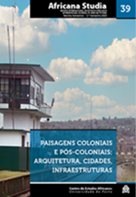Retracing continuity and discontinuity of a vernacular typology mass housing in the colonial context of Morocco: the case of the city of Casablanca
Abstract
This contribution aims to explore the courtyard house typology experimented in Morocco during the colonial period. In order to answer the needs of mass housing in the city of Casablanca, the colonial administration launched large-scale public housing
programs. Foreign architects were then seeking responses adapted to local context, adopting courtyard house typology depicted on traditional Muslim dwelling in order to achieve both individual and collective mass housing programs. From the Cité Habous realized in 1918, to the grid 8x8 of and the Nid d’abeilles in 1948, these experiences generated new architectural and urban modern typologies. Through an architectural and historical analysis, this article retraces continuities and discontinuities of courtyard house typology from colonial to postcolonial context and investigates how its reinterpretation had evolved differently beyond its own contexts, feeding new theoretical and practical answers.
Keywords: Courtyard house, typology, mass housing, Casablanca.
Downloads
Downloads
Published
How to Cite
Issue
Section
License
Copyright (c) 2024 Africana Studia

This work is licensed under a Creative Commons Attribution-NonCommercial 4.0 International License.
Copyrights of all published material belong to Africana Studia.
Original images supplied by authors will be returned to them if requested


